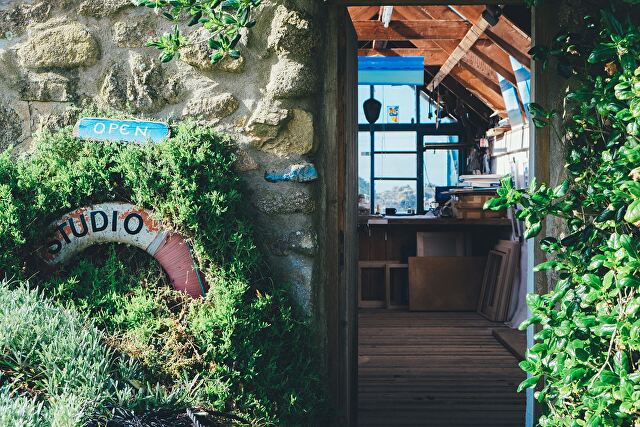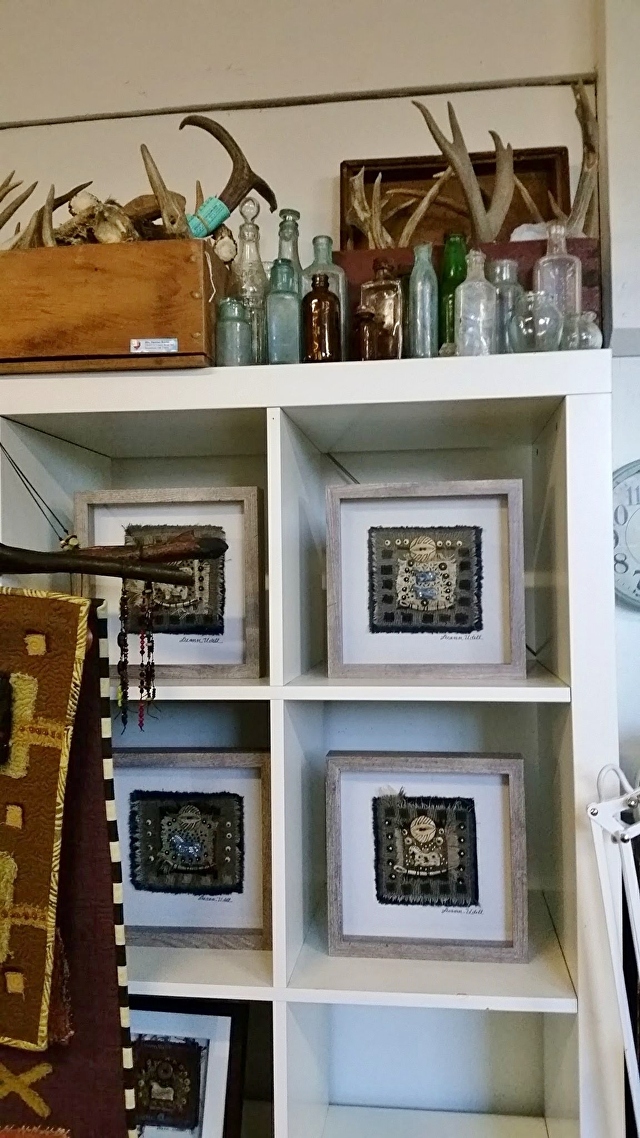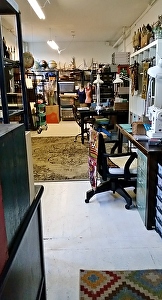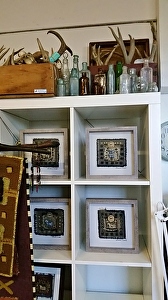Volunteer work for open studio tours is always a thing.
Back in New Hampshire, another artist and I founded Keene’s first open studio tour. (It didn’t last long, unfortunately, and ended only a year or two after we left for California.)
We kept it simple, we kept it affordable, and only a handful of us did all the heavy lifting.
It was a huge success, and I learned a lot in the process.
We called it KAT (Keene Art Tour) and set up a website. My colleague created a map, another artist designed the signs, someone created a flyer with that map and the artist listings, I handled publicity, and a couple other artists contributed work, too. (I accidentally deleted ALL my emails from the last two decades soon after I moved here, and I can’t remember or look up all the deets. OY vey!)
At our wrap-up meeting, a few people had complaints about what could be better. We asked them if they’d like to take over those areas, and they said yes. And unsurprisingly, they reneged on the following year. (No worries, our small crew still managed! The fewer people involved, the less drama.)
Here in Sonoma County, our tour is much, much larger (in number of artists and area), and more expensive. The cost is mostly due to the beautiful catalogs published, tens of thousands, which are not only delivered to galleries and other businesses that promote us, but also mailed to individuals who sign up for them. Although this makes the tours pricier, these catalogs/collector’s guides also hang around for a year, or even more. So for the price of a quarter-page ad in a newspaper (for a day) or magazine (for a month), we get a year-round ad that people hang on to. (I’m gonna brag a little here and show the cover I appeared on in 2021!)

Both tours I’m in (Art at the Source and Art Trails Sonoma County) require either 10 hours of volunteer time or $200 payment to opt out.
Both tours have similar committees we can choose to volunteer for: Publicity, mentoring, catalog proofing, catalog distribution, art intake/pick-up (for exhibits), hospitality (for in-person meetings with food and refreshments), signs, envoys for local farmers’ markets, etc.
I’ve served on several different committees in both organizations, and chaired/co-chaired the mentoring committee for one.
I’ve become a steering committee-at-large member lately, because I love to jump in and help when it’s something I have expertise in. But instead of encouraging you to volunteer just because it’s the right thing to do, let me give you a peek behind the curtain.
Behind each committee volunteering are some pretty cool gifts!
Hospitality: This committee is where a lot of new members end up, because you don’t need much expertise here. I chose this committee for years, because it was easy, didn’t involve much travel (just to the center and back), and needed none of my expertise. The hidden gift in this one? You get to take home the leftover food! A lot of people leave behind their appetizers, desserts, COOKIES, etc. And after the kick-off meetings and the event wrap-up meetings, we would divvie up the leftovers and take them home to very happy family members (and us!)
Catalog distribution: Yes, you get some destinations that are loooong and far away. But that chair recently shared that those drives often go through beautiful country here in California, hours of redwood forests, rivers, and ocean views. Think of it as work with benefits! (Thank you for the insight, Katie Kruzic!)
Publicity: I was interviewed for our Keene NH tour, and because I love talking about such things, it was exciting–and an honor!–to be featured on a live radio show!
Farmers’ Markets: Members attend farmers’ markets to hand out catalogs and talk about the tours.) A new member not only enjoyed talking with people about our tour, they also got to promote themselves. They brought samples of their work and bookmarked their listing in the catalogs they handed out. (Thank you, Madeline Behrans-Brigham!)
Mentoring: I love to write. And I love visiting people’s studios and working with new artists on how to set up their work, how to welcome visitors, how to look for problem areas in our space that people unconsciously avoid, etc. It’s one-on-one work, most people are very grateful for the insights and suggestions, and now my blog series, How to Open Studio, is a resource available to all artists on both tours. (And my subscriber numbers took a leap, too. YAY!!)
Catalog distribution: Most of our catalogs get distributed to art galleries even as far away as the East Bay/San Francisco area. A new member on that team was unsure about driving so far in such urban areas, and I offered to travel with them. That’s when I learned that we get to not just visit those galleries, the gallery owners/managers are kinda interested in OUR work. New opportunities for gallery representation we otherwise might never know about!
Exhibition: (This chair, who hangs the artwork for the Center’s preview exhibits, is also the person above. They sit on both steering committees and chairs the Board of Directors for Sebastopol Center for the Arts, the non-profit that hosts both tours. (Thank you thank you thank you, Sally Baker!) First, we get to see ALL the artwork ahead of time. Second, Sally takes input/suggestions from the entire team. Third, she not only creates the perfect display of over well over a hundred artists, she makes the entire committee feel heard, and respected. I love watching such a wonderful, engaging, wise human at work. Am I surprised she taught art for over 30 years? I would have loved being her student!
Ad sales: One artist has handled the ad sales so vital to our program. They are also somewhat introverted. This task well for them, because businesses hate being contacted by phone. She researches the business owners, communicates with them by email, and mails them media kits. This volunteer work suits her, and she’s been amazingly successful at getting the ads that fund our projects. Because they avoid the in-person stuff, I’ll wait til I have their permission to add their name. Update: She’s says it’s okay! So…Thank you, Jane Garibaldi!
Member-at-large: I’ve become one on one tour, and I love it! I simply volunteer whenever a committee leader needs something extra. One year, I accompanied one of the founders of one tour to deliver work to a satellite gallery. (These are galleries who partner with us to host preview exhibits in other cities.) I not only got the back story of how and why one event was created, I also got beautiful words of wisdom that I share with others. The most important: “I’ve been doing these shows for over 30 years. Some years I’m swamped with visitors and sales, and some years it’s totally dead. No rhyme or reason. It is what it is, there’s no ‘fixing it”. And it doesn’t matter, I just keep doing the work and showing up.” (More thanks, Sally Baker!)(Very mature, and very helpful for newbies, who often quit if their first year isn’t successful.) Another year I had the perfect solution for restoring/repairing road signs for our event, and jumped in to help the sign committee.
I hope to hear from to hear from other people about the advantages of their committee service, but here’s the biggest one I can think of that affects them all:
We get to meet other artists!
The downside to open studio tours is, we artists don’t often get a chance to visit other artists, especially their studios. The committees I’ve served on, from hospitality to at-large, all result in me getting to know other artists first-hand. Friendships have formed. Insights and wisdom are shared. (Er…I also learn whom to avoid in the future….)
Now…if you’ve served on, or chaired, similar committees, please feel free to share what you learned, gained, enjoyed about your experience! I’d love to hear about it. And heck, maybe I’ll join that committee next year!

























